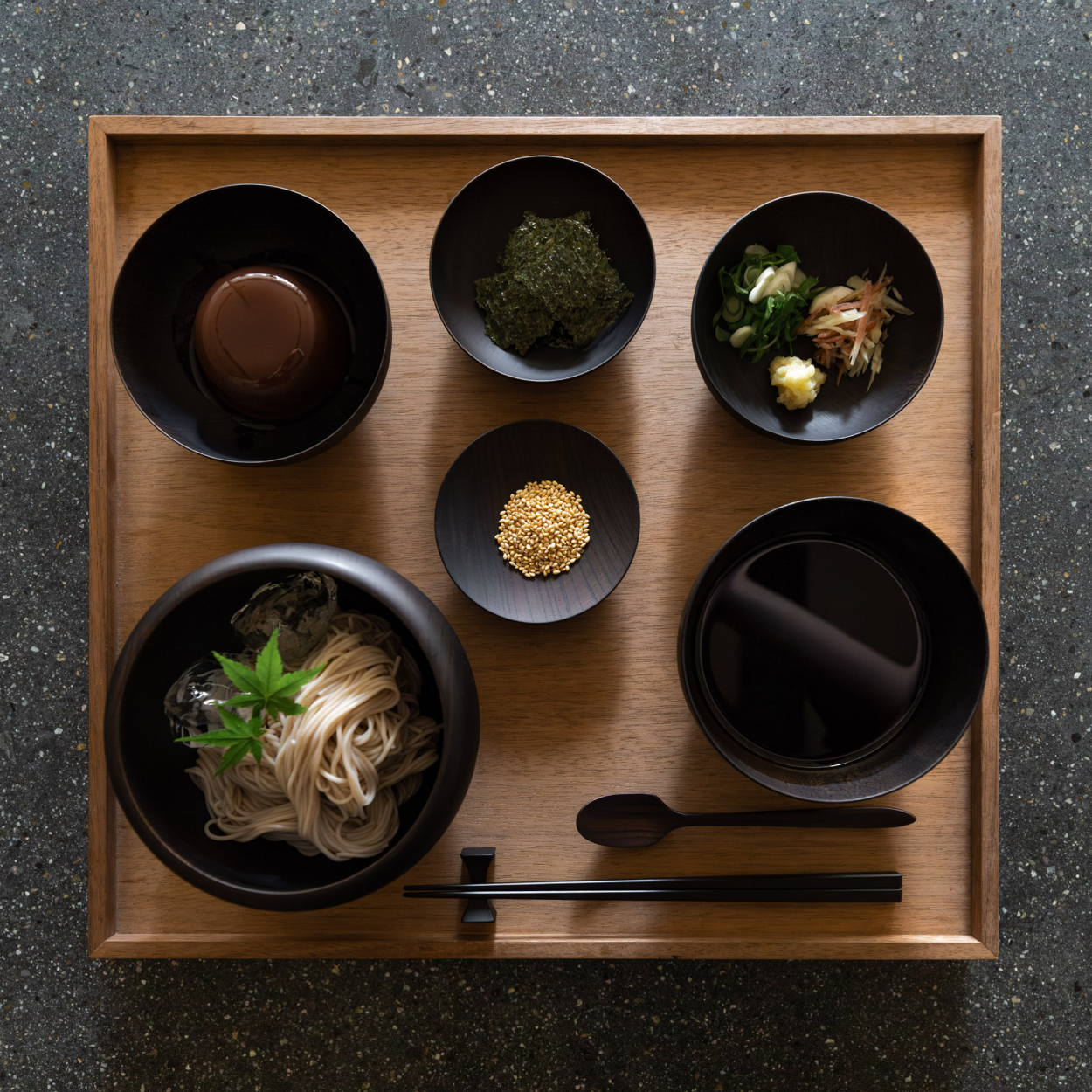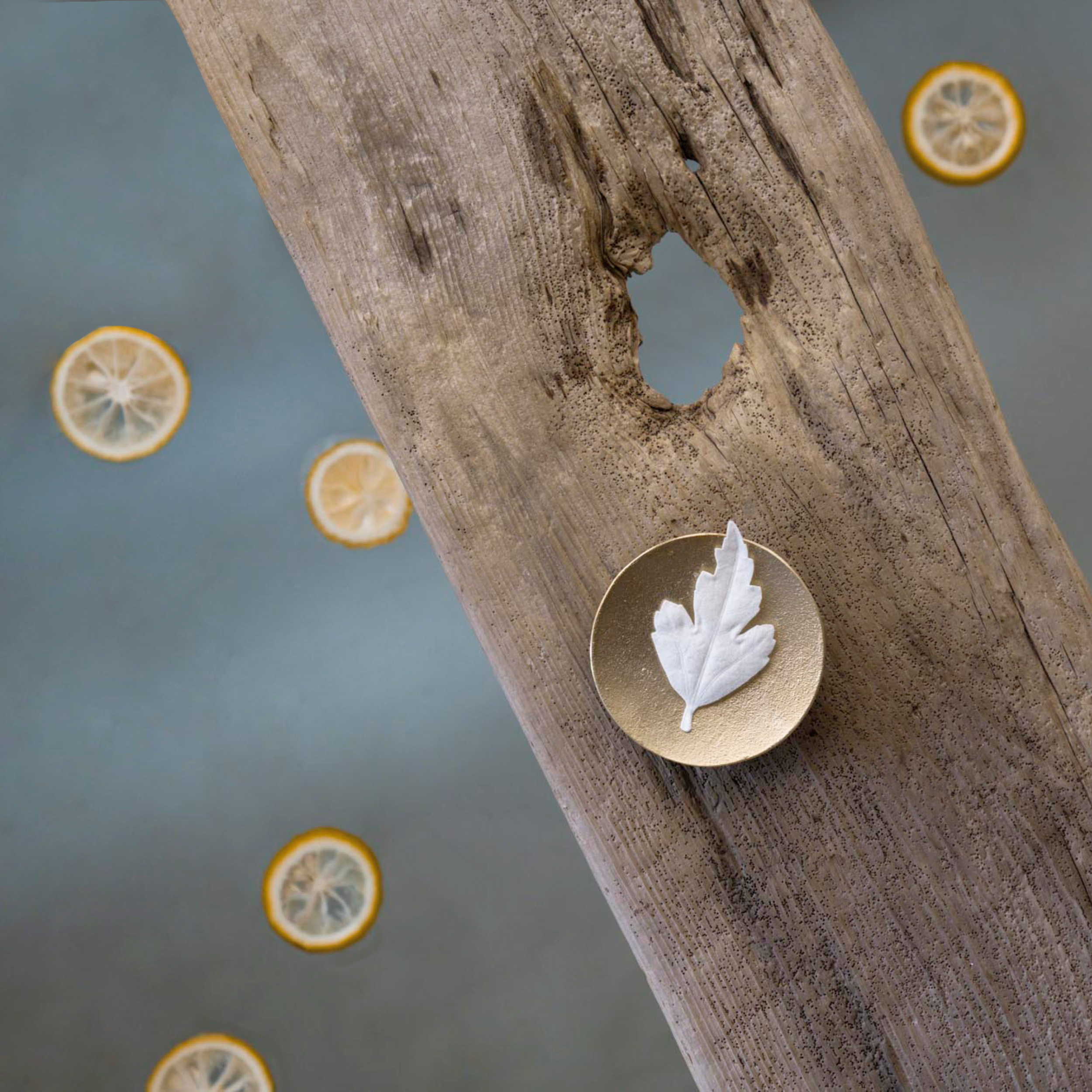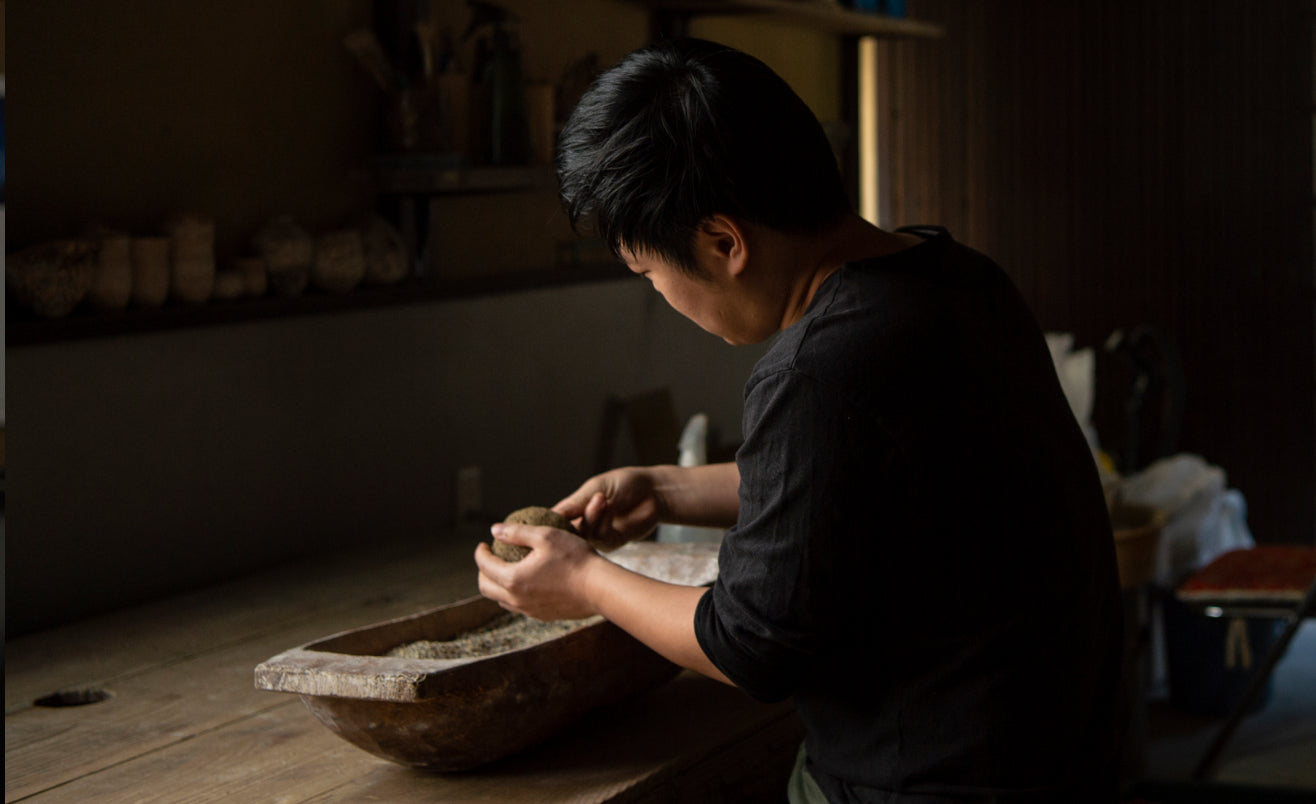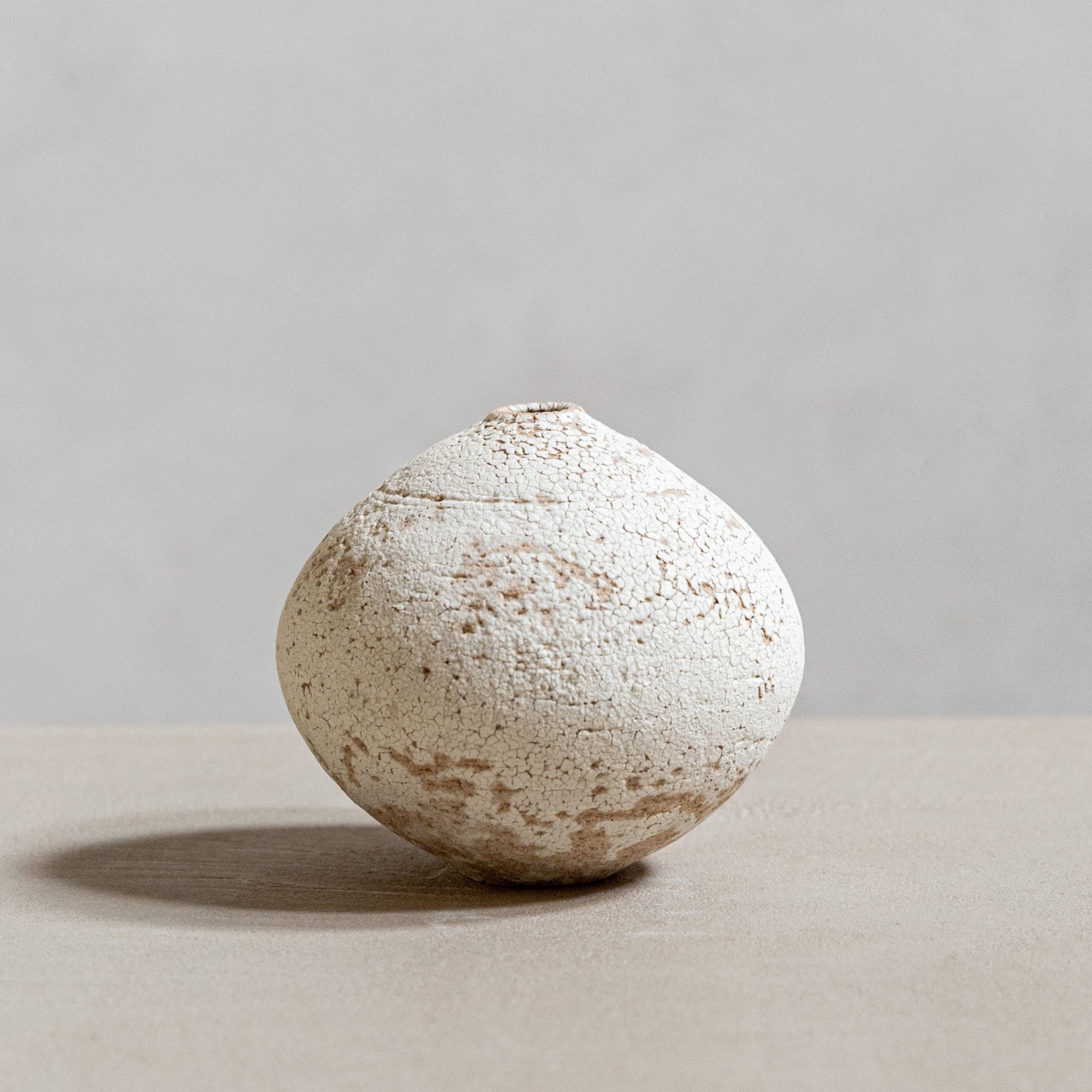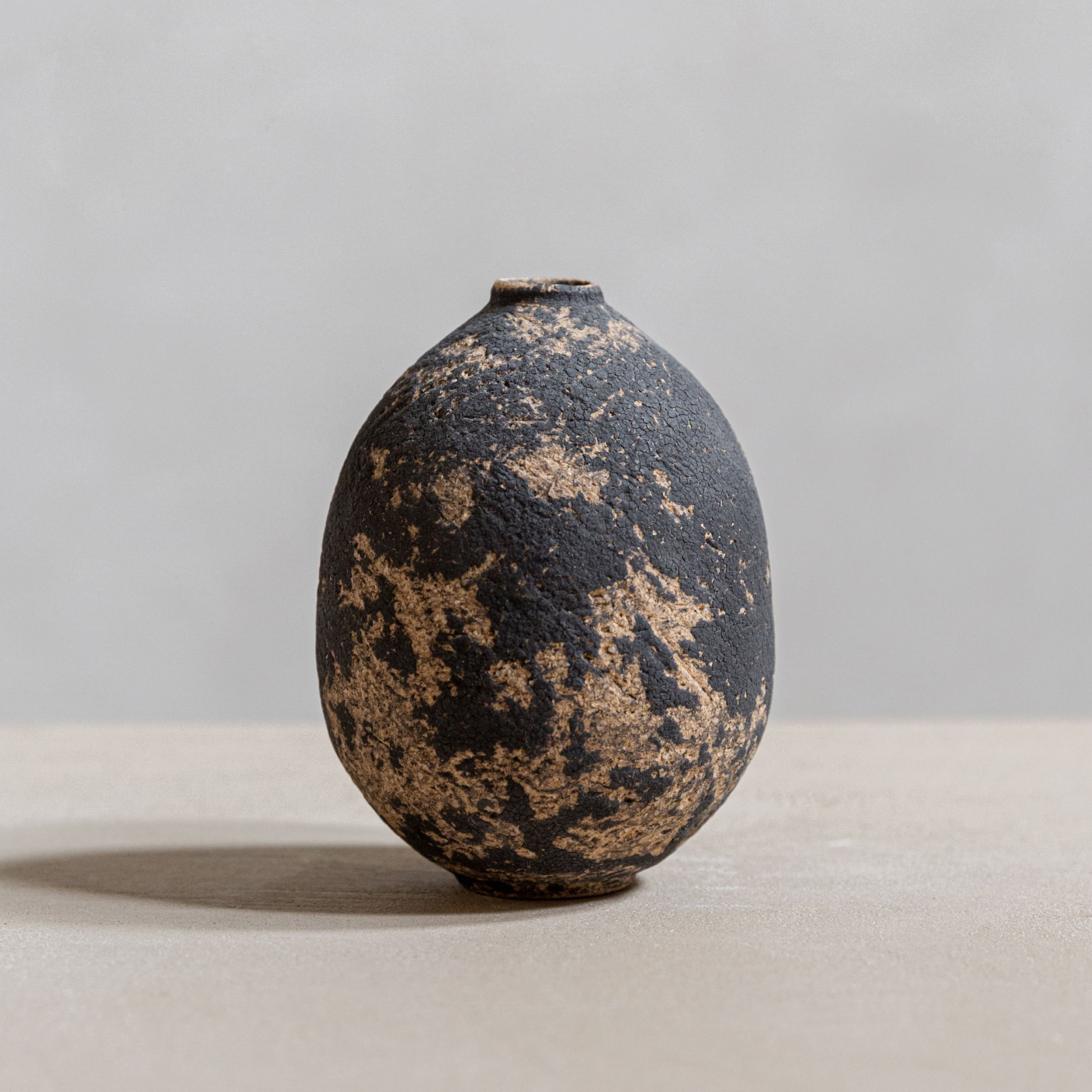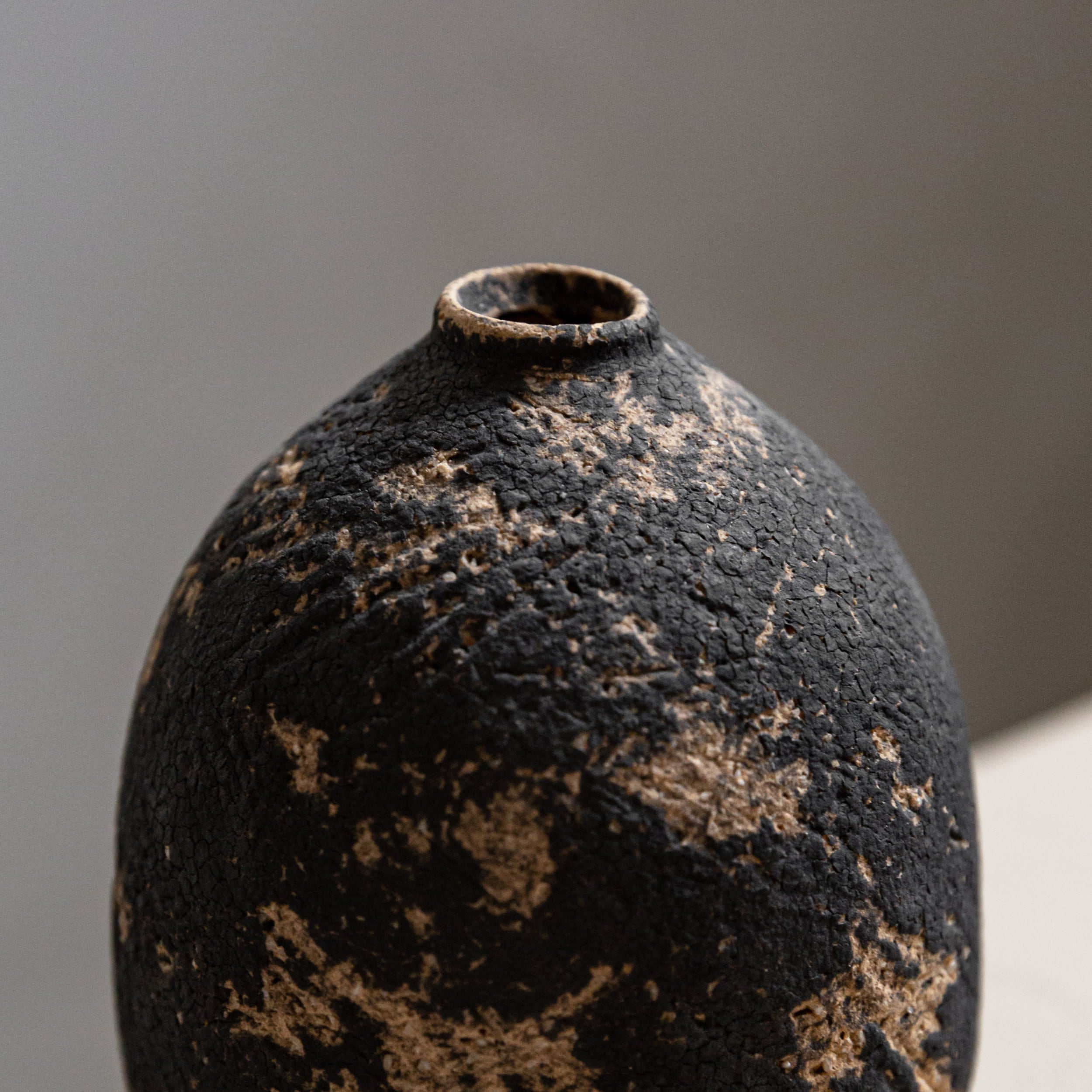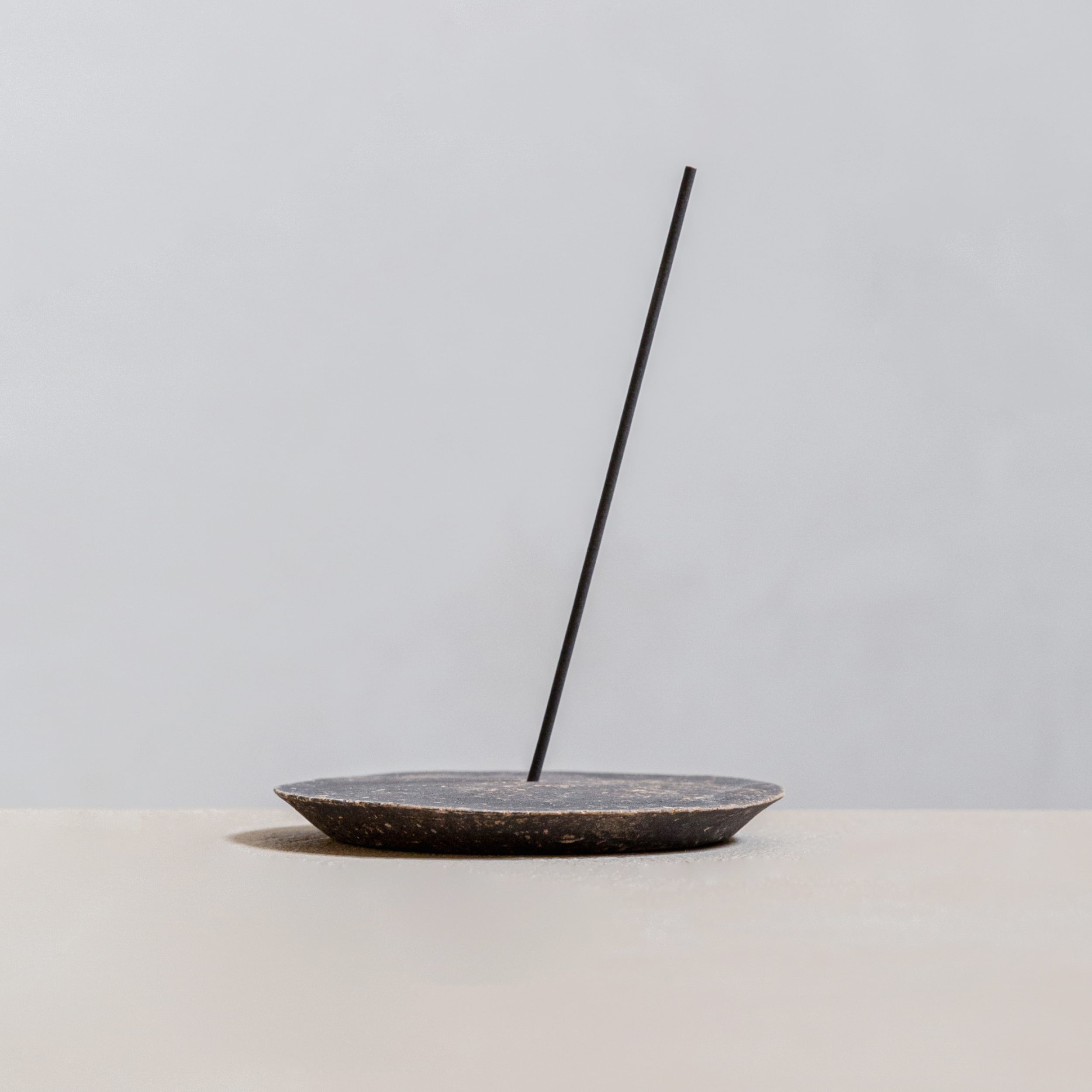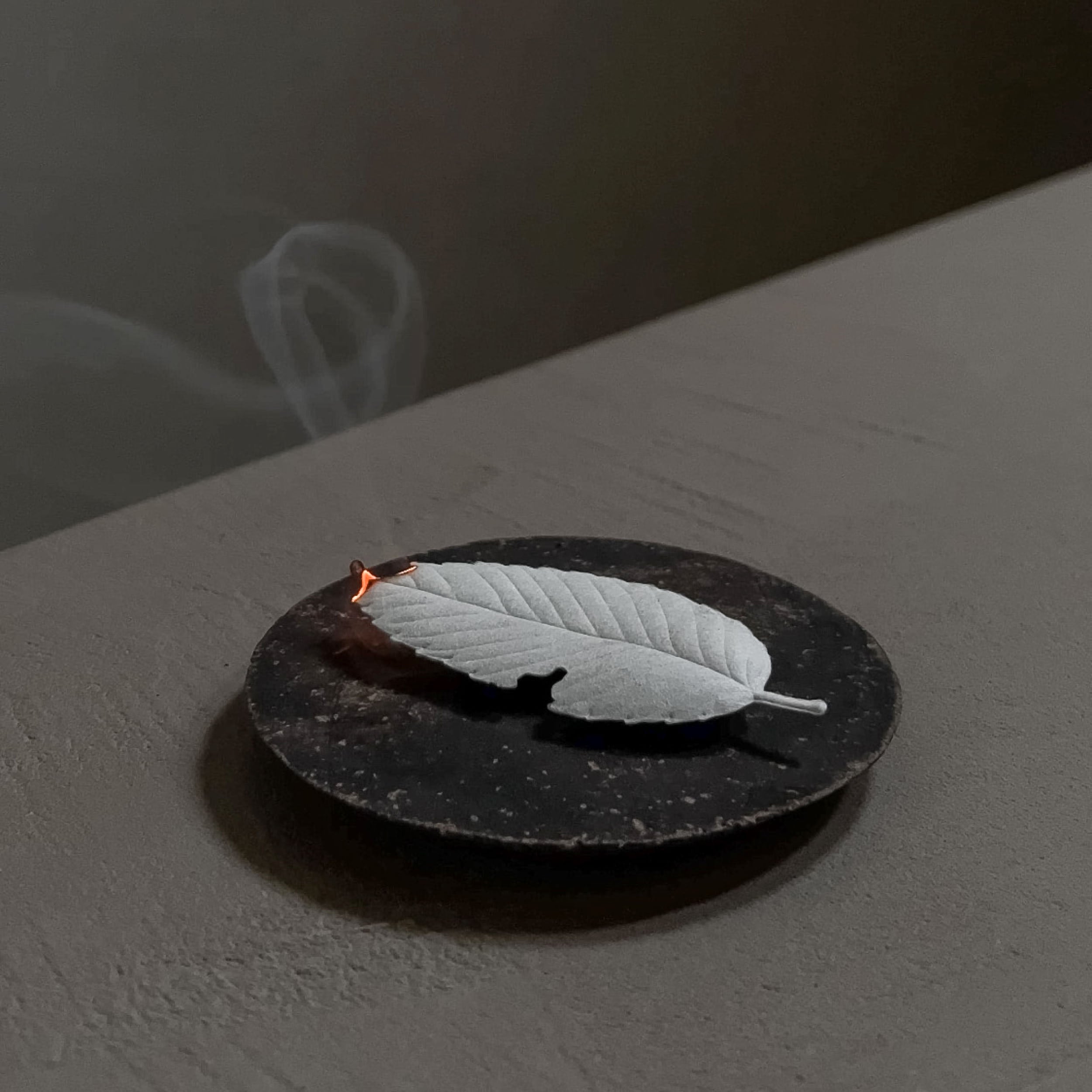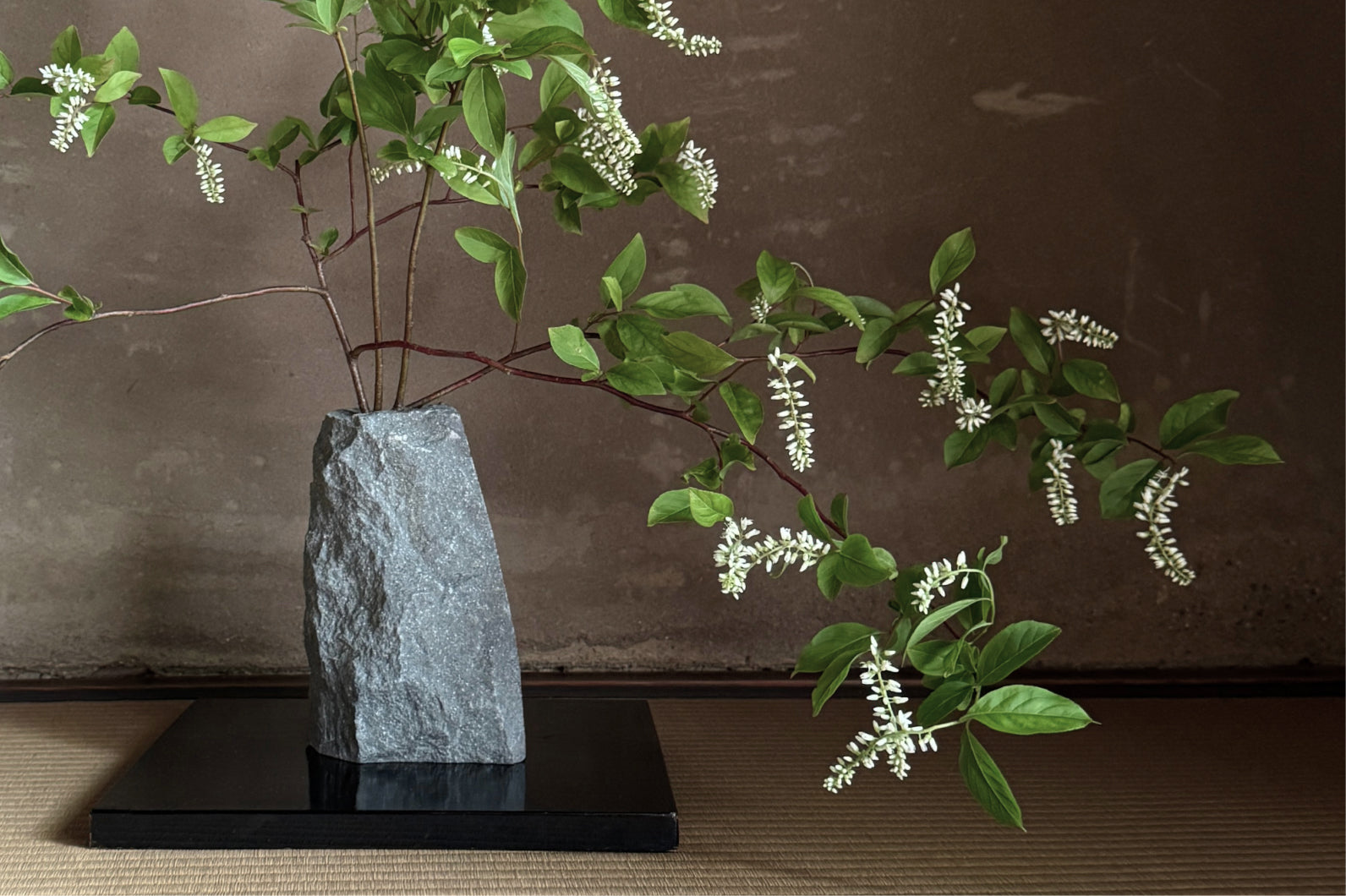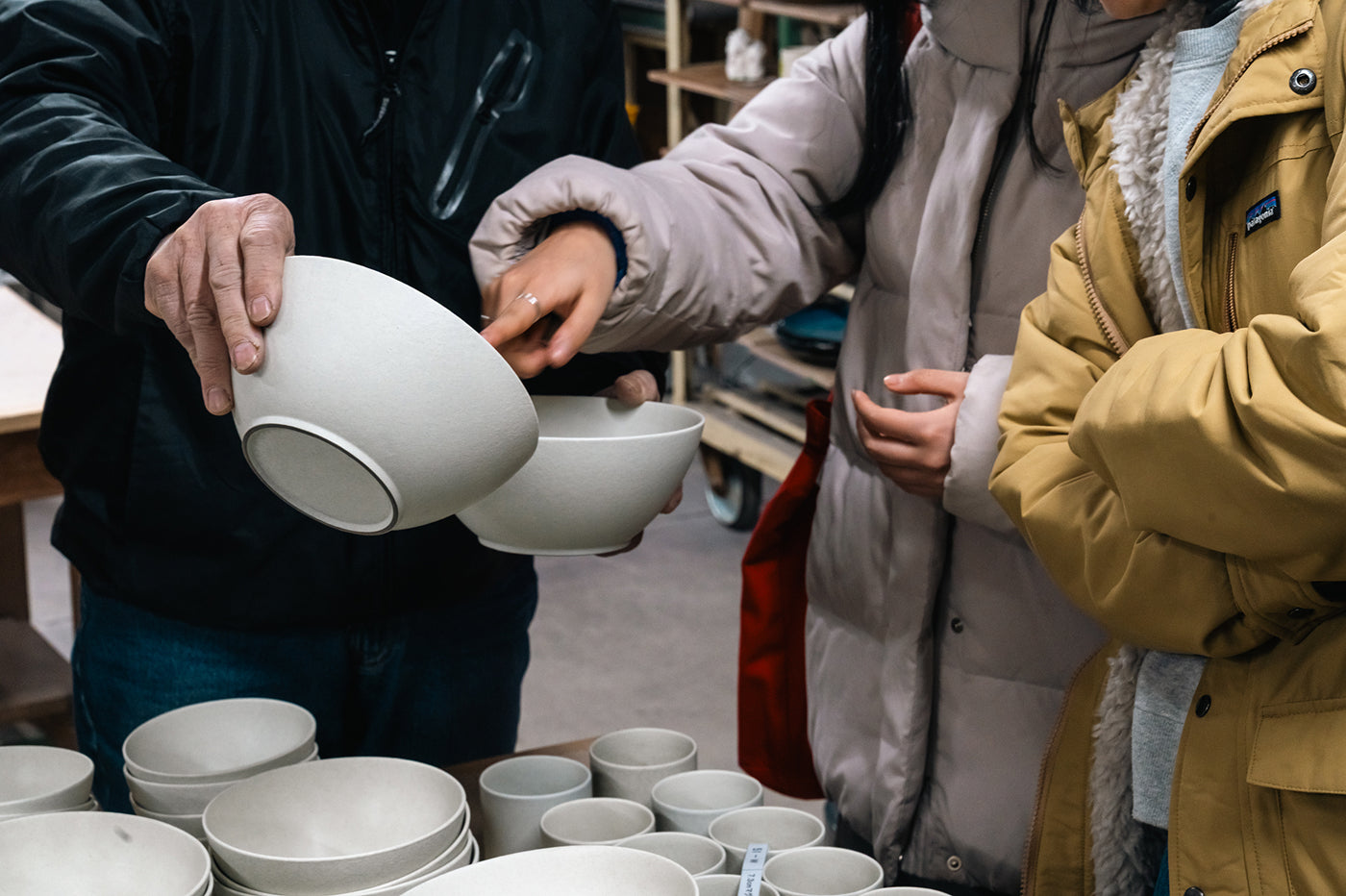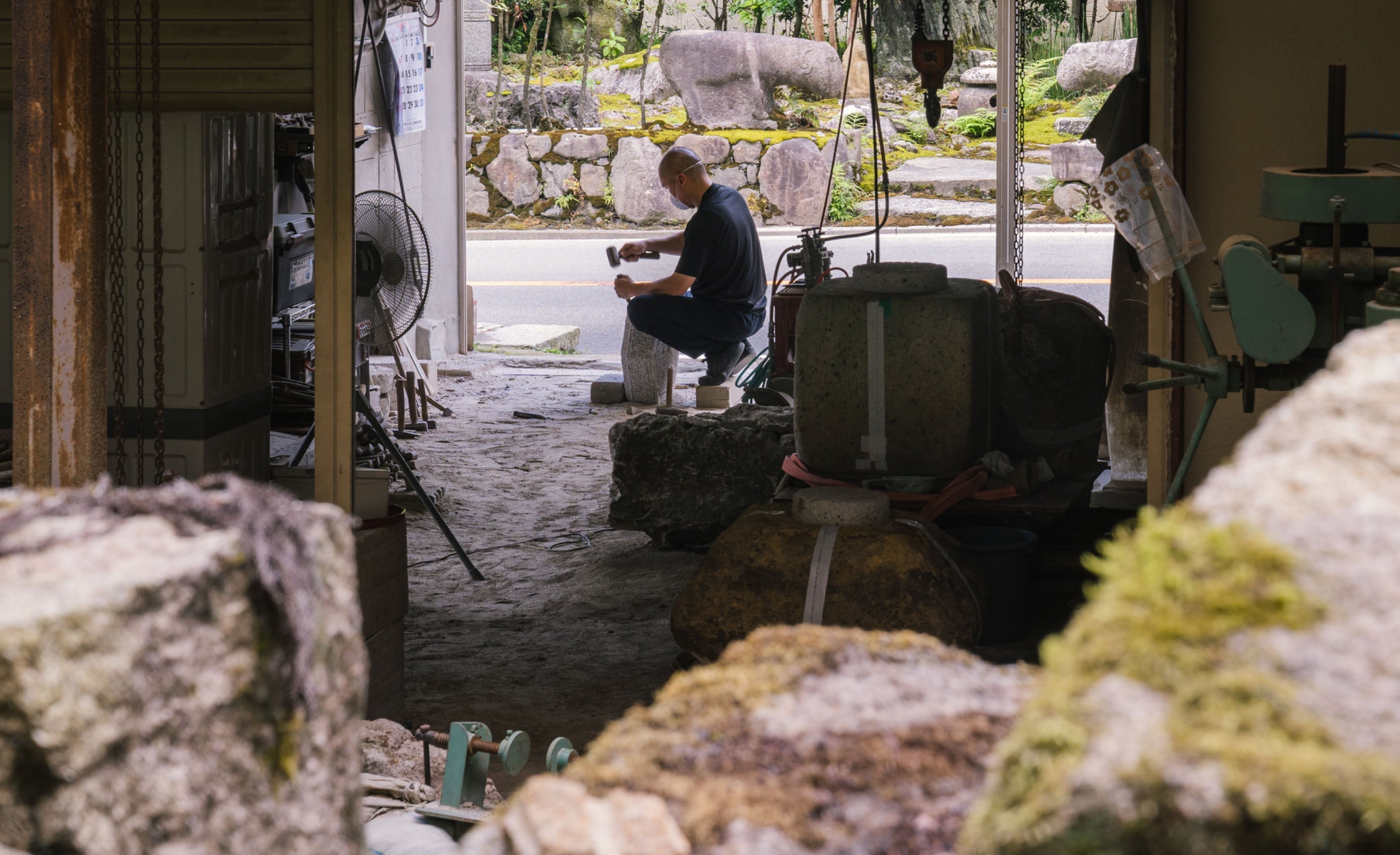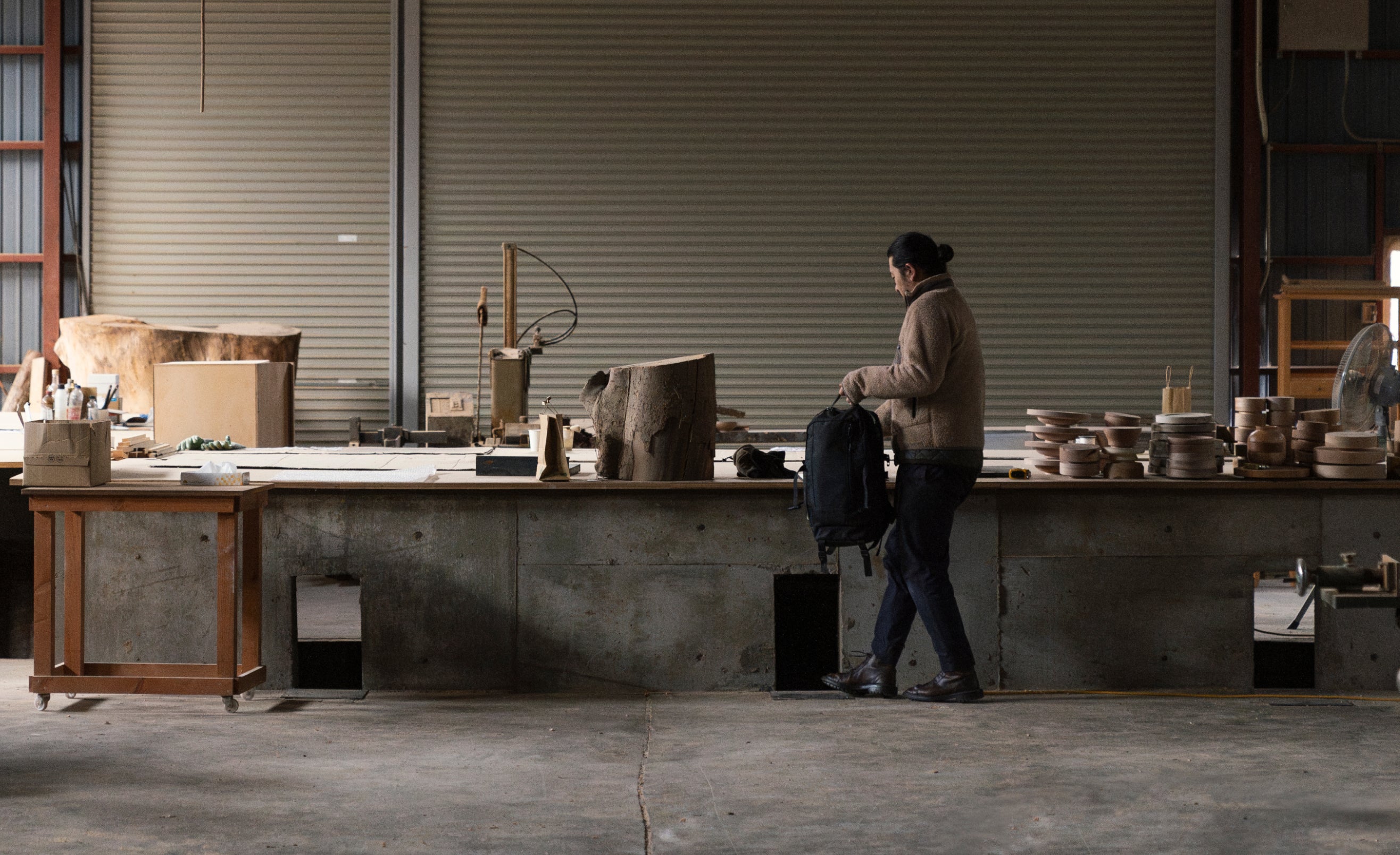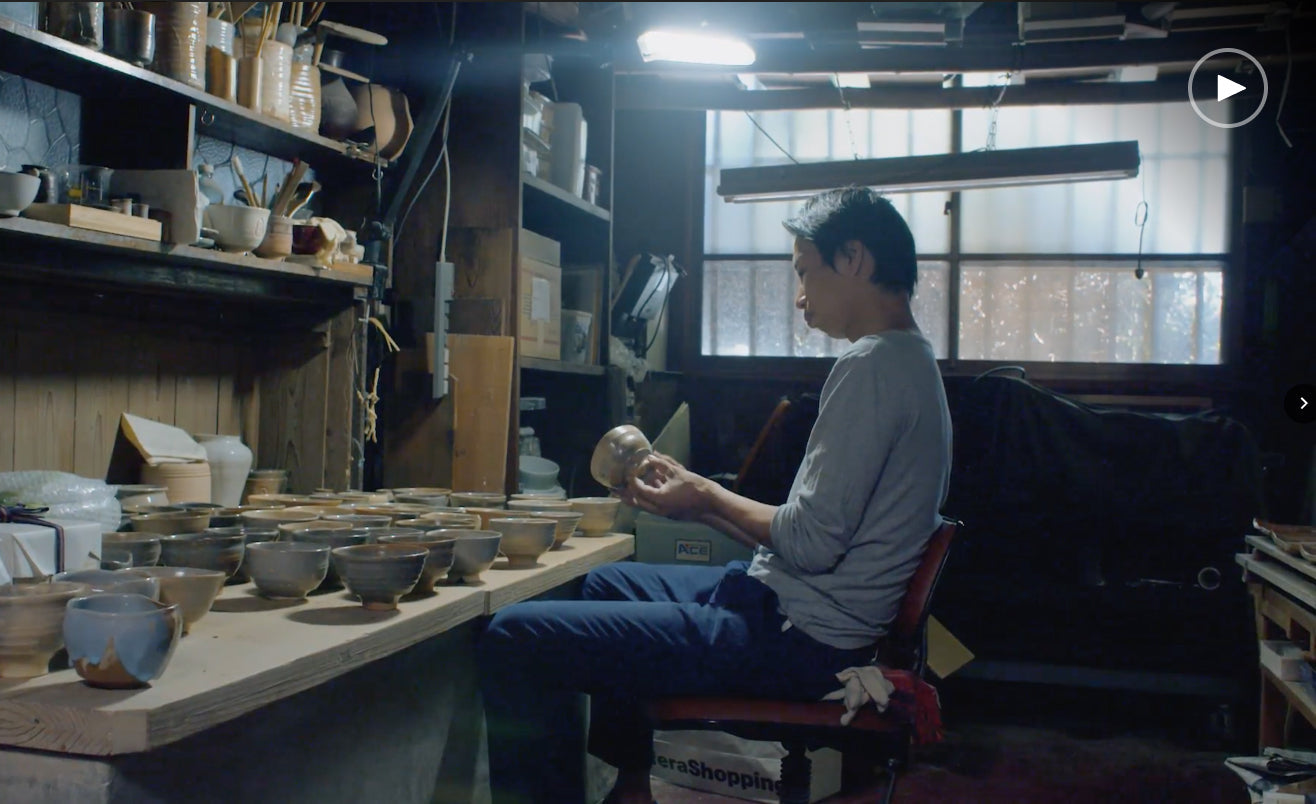ABOUT THE ARTISAN
Meet Wataru Myoshu, born and raised in Kameoka, a town known for being a gathering place for renowned artisans in Japan. 30 minute by train from the center of Kyoto, Kameoka is a quiet town just beyond the mountains, a residing place for many ceramic, woodworking and indigo dye workshops. Having been introduced to ceramics at age 4 through a pottery class, Myoshu has been honing in on the craft for over 25 years. Opening his own workshop in Kameoka, his ceramics are growing in demand for his approach in representing time and space.
For a deeper look, we are honored to have interviewed Myoshu to step into his world of craft.

THE ROUTE TO NOW
Growing up in Kameoka, I was always fascinated by the beauty that grows with the passing of time, and its buildup that can be sensed through objects and spaces. Through a close observation of my surroundings, I think I was able to cultivate those elements into my own aesthetic as a young creator.
When I decided to enter Seika University as a ceramics major, I wasn’t necessarily set on becoming a ceramics craftsman from the start. The reason I entered was because I purely wanted to learn more about ceramics and gain a deeper understanding for what has always been my hobby. When it came time to graduate from university, continuing ceramics professionally seemed to be the natural way to go, considering I had already come this far. I had either wished to be involved in craftsmanship or be a craftsman myself, so there has always been a connection within myself to creating art.
Come to think of it, I didn’t feel any turmoil in making the decision to continue into craftsmanship as a career as many would assume, as my curiosity towards ceramics naturally flowed into wanting to hone into my work.

FROM STUDENT TO INDEPENDENT CRAFTSMAN
The transition in mentality between doing ceramics as a hobby and as a profession was definitely something to adjust to. Although I often created for my own sake in the past, I understood that craftsmanship does not conclude with me. Creating under the premise of people seeing and using my work is one of the hardest parts of the job, but the part that brings the most satisfaction.
Most of my work in craftsmanship centers around exhibitions, as I’ll have 2-3 solo exhibitions and a few group exhibitions each year. I also get individual orders from clients and permanent exhibitions mixed in so my schedule varies depending on where I’m at in the year.
It’s not that I just continue creating the same collections for each exhibition, so thinking of new ideas and fresh pieces is always something that I continue to put time into.

SOURCES OF INSPIRATION
The effect of my environment on my work is significant, thus I’ve chosen to work in an old house or Kominka built 85 years ago now refurbished as a ceramics studio. I like old spaces as I find comfort in materials that have withstood the test of time such as the earthy walls of old buildings. The material of old spaces and old things have their own distinct tones that I like to incorporate into my own aesthetic.
I've found that I naturally look towards architecture for inspiration, such as when I’m walking through town and I see an old building, or church walls, things like that. Architecture is built in a way that makes sense, is logical and beautifully constructed. In looking at well planned composition, I wish to incorporate those elements into my own creations to interweave elements of space and time.
I also pull inspiration from looking at the shapes of old artifacts in the planning process. For example, a ceramic style called Panari-Yaki from Okinawa from the 19th century has a distinct, old, curved characteristic that I’ve based some of my vases on. Other sources include a type of Urushi called Negoro Urushi, Roman glass, older bronze vessels, and elements of architecture such as walls or pillars.

My growing interest in areas of work other than ceramics has definitely become a larger source of inspiration that has allowed me to broaden my perspective.
Even though I use a lot of old influences when thinking about my creations, I strive to mimic the feelings I sense within myself when I see something I like, instead of creating a replica of that work itself. I think keeping in touch with my own senses and emotions has kept me grounded and became a standard for myself that I always try to meet.
Keeping the nuances of tradition alive while adding my own personal touch is something that I will hone in on in the years to come.
COMMITMENT, CARE, CONTEMPLATION, AND CONTROL
I pay attention to different things depending on the kind of piece I’m making, however the one thing that never changes is that I can’t put anything out unless I'm truly satisfied with it.
On days that I’m busy, I can get distracted and am not able to put my full energy into creation. Those are often the times when I'm dissatisfied with my work. Sometimes the piece will feel a bit off in the initial stages of shaping or after the work is fired in the kiln, and I’ll think in my head that I could have done things a bit different to make the piece more interesting.

In the case of a painting, you are able to plan and paint from start to finish without having the work ever leave your fingertips. Yet, often when I’m creating, there are parts that I leave to natural elements. For designs, I often dip the coated piece in water so that some of the soil on the top layer slowly dissolves into the water, creating variations each time. The process of putting the piece into the kiln is another part in which the craftsman has to let go of the work, and it is out of our hands.
Although we try to control this process as much as possible, the accidental or chance elements are things that cannot be predicted. This uncertainty of not knowing how the work will turn out has become excitement that motivates me to continue creating.
CONCEPT FOR CREATION AND STYLISTIC CHOICES
A key characteristic of my own style is how I use only natural clay soils without a glass coating on top. Since my work is made from soil, the piece absorbs water, almost as if it’s breathing. If you put water in one of my vases and arrange some flowers in it, the water stays fresh for much longer. Since it keeps the water so clean, it makes sense for it to be a vase right?
Another reason why I’ve made the decision not to use a coating is because you get to see the changes in color of the ceramic through time. For example, if you use a cup to drink tea, the cup gradually changes color as it absorbs the color of the tea through the years that it is used. Since I fire my work in a kiln at such high temperatures, the change in color is not instantaneous, yet there is a gradual change, similar to the way that leather products transform with repeated use.
My theme for creation revolves around time, so I think the way that the piece changes with use fits perfectly with my concept. Those are the reasons why I think it is so significant to me that I use only natural soil for my pieces.

With current society making many products for consumption purposes, creating products that can be used for a long period of time is always something that I am conscious about in the process.
I also like to change the shape of my pieces bit by bit to see what is most comfortable for the eye. Unlike identical products that are made by molds, all of my work is hand shaped and hand carved using string etc. I look at the distinct qualities of each piece and shave off excess parts to create the shape I desire.
Oftentimes, even with the same type of shape, I start to see slight differences in each one, almost as if each one has its own unique face.
CREATING SPACES THAT EXUDE THE ESSENCE OF TIME
Something I really wish to do in the future is integrating my work into architecture, and having ceramics incorporated as one part of an entire space. Adding an accent to change the atmosphere or ambiance of a room is something I aspire to do going forward.
As a backbone to my career, I also want to continue experimenting with the coatings of soil and the way that it changes in my hand, in the water and in the kiln. I hope that through continuous experimentation with this craft I am able to share the excitement with the people who see my work.

HOW DO YOU WANT PEOPLE TO USE YOUR WORK?
I actually don’t feel the need to define my work to any specific uses, and I want people to keep an open mind and use the pieces in broad ways. This is a huge reason why I like to keep simplicity at the core of my work so that it fits into any scene, and that people have the flexibility to use my work in the way that suits them. The simpler the shape and style, the more the design stands out too.
For example, it doesn’t have to be a vase. You can place it as is, you can put soil in it and grow a plant, use it as a pen holder, anything you want. Depending on how the owner decides to use the piece, the colors will change, and I hope that you can blend your own colors or personality into the things around you.

